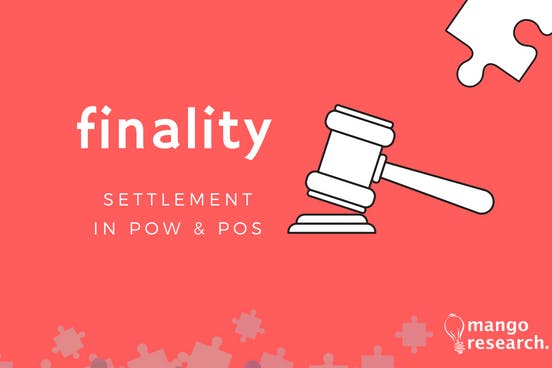
- All
- Tools
- Analytics
- Technical Analysis
- Trading
- Blockchain
- DeFi
- Guides
- Company News
- Educational
- Opinion
- Price Predictions
- Market News
- News
- Trading cases
- Practical guides
- Exchanges
- Trading signals
- Cryptocurrency
- Crypto bots
- Other
Become a crypto master
Learn everything about crypto,
trading and bots

Ethereum History (Part 3: Final)
Start Trading on 3Commas Today
Get full access to all 3Commas trading tools with free trial period

In the previous two installments of our “History of Ethereum” series, we described the first three phases of the network transition to the PoS algorithm, recalled the problems the Ethereum community faced in the process of network development and ecosystem formation, and described important events that occurred from the project’s inception until early 2019.
In today’s article, we will talk about the latest major network update, preceding the phased transition to Ethereum 2.0, describe the main phases of this transition, and talk about recent events and changes that have occurred to the project.
Istanbul hardfork
On December 8, 2019, the first stage of the major Ethereum network hardfork was held. It was called Istanbul and consisted of six updates. Istanbul is the last network update before a phased transition to Ethereum 2.0.
With the Ethereum network’s growth, some smart contracts have become too resource-intensive. Since the computational costs of data acquisition and block size increased, while the gas price has not changed, there is an imbalance between resources’ consumption and operational prices. This mismatch allows for a number of attacks on the system. To eliminate the possibility of attacks, the gas price for certain operating codes was increased.
The update added the Ethereum and ZCash interoperability, as well as interoperability with other the Equihash based cryptocurrencies.
Also, ChainID operation code was added, which allows using a chain identifier to prevent the so-called “replay attack.” This attack was made possible as the network hardfork led to the appearance of two parallel blockchains. Since the Ethereum and Ethereum Classic accounts have the same addresses and private keys and have two separate networks with two separate blockchains, anyone who held funds in the first iteration became the owner of funds in the second one. The problem was that when a transaction was broadcasted using one of the networks, there was a risk that it would be included in both iterations.
The second phase of the core network change, called Berlin, which was scheduled for May 29, 2020, was moved to the fall of that same year. Berlin is the latest and most important update to Ethereum 1.0, necessary for the launch of the Ethereum 2.0 phase zero – Serenity.
The Berlin update was planned to include a proof of concept algorithm to replace Ethash – ProgPoW (Programmatic Proof-of-Work).
The ProgPoW is a modified Ethash algorithm to work with the GPU. By implementing this algorithm, Ethereum will become more ASIC-resistant. In the Ethereum network, the implementation of ProgPoW is necessary to avoid a hardfork when switching to the PoS protocol.
In addition to the new algorithm, Berlin had to bring the modified signatures required for the operation of the ETH 2.0 deposit contract, which is used by validators for interacting with the blockchain, as well as for transaction accounting staking.
Also, before the Berlin upgrade, developers had to run a YOLO testnet to check the stability of the primary network. This would allow developers to synchronize the different versions, but the plan failed due to a lack of coordination of the contributed EIPs.
It is important to note that the so-called “Ice Age” began in the Ethereum network – an increase in the difficulty of ETH production. For this reason, the network requires an update.
Ethereum 2.0 – Serenity
Serenity is an Ethereum 2.0 update to change the smart contracts protocol and move the network from the PoW consensus algorithm to PoS. The transition to PoS is meant to solve the scalability problem by improving the ability of the network to confirm, verify, and perform transactions.
Serenity was divided into 3 phases:
- Phase zero – Beacon Chain
- Phase one – Shard Chains
- Phase two – eWASM (New Ethereum Virtual Machine)
Beacon Chain
Beacon Chain is a separate chain on the Proof of Stake protocol, which will exist in parallel with Ethereum’s PoW blockchain. It will be designed to control the work of validators, select the next block creator, ensure the distribution of rewards, and optimize the network for a smooth transition to a new protocol. The system debugging phase was completed back in January 2020. The Casper protocol will be the new PoS algorithm, replacing Ethash and activating the “difficulty bomb.”
Casper is designed to regulate the network and consists of two versions:
- Casper FFG (Finality Friendly Gadget) – an update to be implemented at the initial transition stage. At this stage, a hybrid algorithm will be used to achieve consensus. Blocks in the blockchain will be formed at the expense of miners, but a checkpoint will be set to apply PoS mechanisms.
- GHOST or CBC (Correct By Construction) – an update to replace Casper FFG. This step is intended to move to the PoS consensus algorithm.
Shard Chains
Without diving deep into details, sharding is a mechanism, allowing individual sets of nodes to process transactions by segments. This means that nodes only need to store and process a certain part of a transaction, which increases network bandwidth. Sharding mechanisms will be used by network validators to process transactions and maintain the network.
A sharding mechanism with Plasma integration (an analog of Lightning network on Ethereum) can significantly increase network capacity. Thanks to Plasma, it is possible to create smart contracts to process data on the second layer and output the results into the main blockchain.
At this stage, the Shard Chains’ basic mechanisms will be launched for further eWASM deployment.
eWASM (Ethereum WebAssembly)
This is an update to the specification for EVM (Ethereum Virtual Machine), a virtual environment, facilitating smart contracts’ functioning and interaction, as well as storage of transactions. eWASM runs on WebAssembly and provides the ability to create smart contracts in popular programming languages, allowing you to embed smart contracts in web browsers and websites.
The development of this stage is in the early days and is only a concept.
Conclusions
At the moment, all eyes are on Ethereum due to the DeFi boom – Ethereum is the major platform facilitating numerous DeFi projects, although TRON and Binance have already entered the race.
Interest in DeFi has led to a spike in the Ethereum network’s commissions and delays in its work. The network has already faced such a problem in 2017, due to the emergence of NFT-tokens and the CryptoKitties project, which accounted for about 12% of all network transactions.
In early August, Ethereum 2.0 testnet – Medalla – was launched. More than 42 thousand validators joined the network, which was meant to ensure the smooth transition process to PoS. To conduct and run the Serenity phase, the test network had to run without failure for 90 days, but two weeks after the launch, a failure caused a hardfork, and validators lost their ETH. Therefore, the network is still in the process of preparation to phase zero.
Metamask mobile wallet was also recently presented to work with Ethereum and ERC-20 tokens.
The process of transition to PoS, DeFi hype, bandwidth problems, and increasing transaction costs made Ethereum the topic for discussion this summer. The transition to Ethereum 2.0 is postponed, waiting for the correction of errors in the test network.

A proven leader, successful at establishing operational excellence and building high-performance teams with a sharp focus on value creation and customer success.




